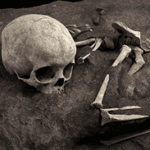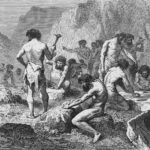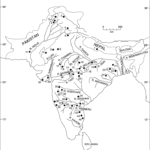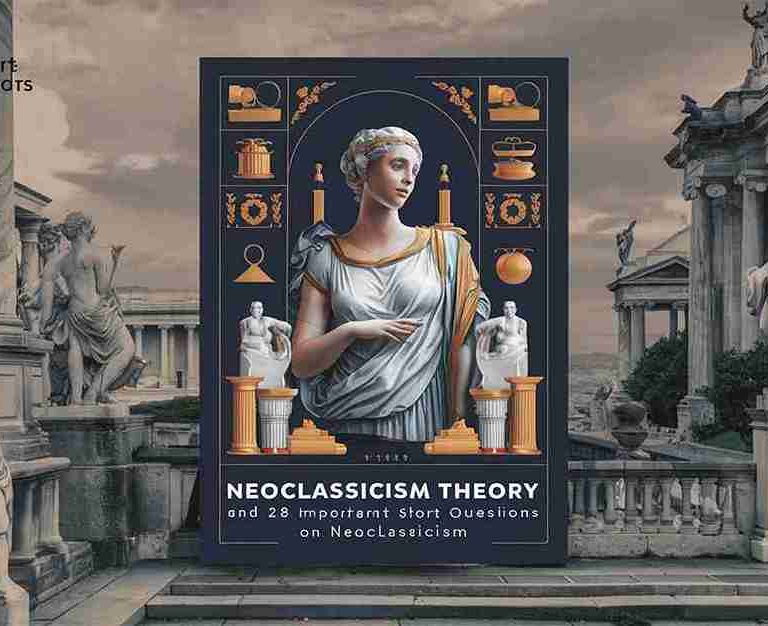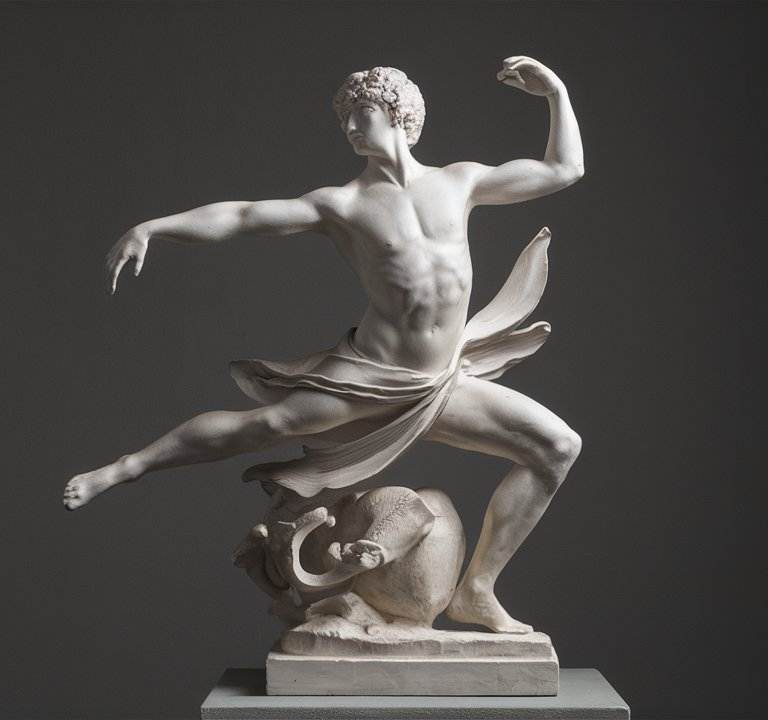That time of year thou mayst in me behold -William Shakespeare:Sonnet No. 73

Sonnet No. 73
That time of year thou mayst in me behold -William Shakespeare:Sonnet No. 73

Sonnet No. 73
That time of year thou mayst in me behold,
When yellow leaves, or none, or few do hang
Upon those boughs which shake against the cold,
Bare ruined choirs where late the sweet birds sang:
In me thou seest the twilight of such day
As after sunset fadeth in the west,
Which by and by black night doth take away,
Death’s second self that seals up all in rest;
In me thou seest the glowing of such fire
That on the ashes of his youth doth lie,
As the deathbed, whereon it must expire,
Consumed with that which it was nourished by:
This thou perceiv’st, which makes thy love more strong,
To love that well, which thou must leave ere long.
-William Shakespeare
PARAPHRASE
That time of year thou mayst in me behold
In me you see that time of year (= late autumn or early winter) when a few yellow leaves or none at all hang on the branches shaking in the cold, like bare, ruined choirs, where lately the sweet birds were singing (1-4). In me you behold only as much faint light as remains of the day (= life) after the sun has gone down in the west, which is soon devoured by black night, image of death that shuts up all in eternal sleep (5-8).
In me you see such faint remains of fire (life) as lie on top of the ashes of its youth as on a death-bed, wasted away together with the poet’s love for the youth which has fuelled the fire of life to flame so brightly (9-12). You perceive the approaching demise of me and of my love, and this perception causes your love for me to grow Stronger and makes you prize faithfully, my love for you which you must lose before long (13-14)
[A] An Introductory Note
Sonnet 73 is part of the cluster 71-74 in which the poet considers how, after his death he wishes to be thought of (or not thought of) by the youth. Consideration of human mortality moves the poet deeply and inspires two of the great sonnets (71 and 73). Sonnet 73 is pitched to the pessimistic key.
Thoughts of approaching death generate this melancholy mood. Here Shakespeare pictures himself in his old age as a bare ruined tree standing as a skeleton in hoary winter or the glimmering twilight turning into a black night. This mood of depression is, however, assumed. Shakespeare was, at the time, not so old as to hear the footsteps of death. To portray himself as a decrepit person was a poetic fashion of the time.
In this sonnet Shakespeare is again seen to recharge his imagination at the batteries of Ovid and Horace, though here are some original and beautiful variations on their theme of transience.
That time of year thou mayst in me behold
[B] An Analysis of the Sonnet
The poet tells his friend that he is a decrepit person. He is past the vitality and vigour that becomes a young man. He is like an autumnal or wintry tree with a few yellow leaves or none at all hanging on the branches which shake in the cold like ruined remains of a church choir, where lately sweet birds sang.
The poet is past his prime. He compares his life to the twilight after sunset. Faint light remains of the day after the sun sinks below the western horizon. Likewise, the afterglow of youth is to be seen in him. The faint light of twilight is soon devoured by black night. Similarly, the poet’s life will, in no time, be shut up in eternal sleep.
The poet then compares his life to a hearth where the dying embers lie on top of the ashes. His life lies on the bed of the ashes of his youth as on deathbed and must soon expire eaten up together with the poet’s love for the youth which fed and nurtured the fire of his life and love. Thus the poet’s life and his love for the youth die simultaneously just as the fire and the fuel die at the same time.
The youth perceives the approaching demise of the poet and his love for himself. This perception causes the youth’s love for the poet to grow stronger and makes the youth prize constantly the poet’s love for himself which he is going to lose before long. In other words, the fast-approaching death of the poet strengthens the youth’s love for him.
That time of year thou mayst in me behold

[C] A Critical Appreciation of the Sonnet
Sonnet 73 is one of the greatest and most typical of the Shakespearean sonnets. It is part of the sequence of sonnets 71-74 which expresses Shakespeare’s preoccupation with the thoughts of death at this period of life. Sonnet 73 is charged with melancholy which is generated by the poet’s reflection on the mortality and mutability of human life.
The poet is a decrepit person tossed by the storms of life, and troubled by the thought that death will soon swoop on him and take him to the region of eternal sleep. The mood of depression informs the whole poem, and lends it a poignant note. It is to a bare ruined tree standing as a skeleton in hoary winter or the glimmering twilight turning into a black night that the poet compares himself in his old age. Embers of his youth’s fire, self-consumed, still linger, glowing before the final extinction.
This melancholy mood is self-generated; actually Shakespeare could not have been as old as he appears in this sonnet, when the sonnet was composed. To depict themselves as old men was a convention among the sonneteers of the Elizabethan period. They often speak of their autumn-time of life. Robert Greene in his “Farewell to Folly” (1591) says age is approaching and he is speaking of his many years at a time when he was not much past thirty.
In Delia Daniel laments “My days are done” when he was only 29. Drayton, Shakespeare’s Warwickshire friend, speaks in Idea’s Mirror of his “Withered brow all wrinkled with despairs” at 31. Though a mere conventional literary exercise, the portrait of himself as a decrepit person remembering sadly the happy days that are no more, that Shakespeare has drawn here is very convincing. If we consider the unreality of the sentiments expressed in this sonnet, we can only admire the dramatic projection of his self to a future state of life.
That time of year thou mayst in me behold
In this sonnet, as in others Shakespeare gives love a value in the end above the decay or despair that dominates it. The sonnet hinges on a note of despair. The poet’s life is fast falling into decay, and he will soon die. But the poet’s decrepitude and his fast approaching death do not affect the youth’s love for him. Rather the perception of the mortality and mutability of life makes his love grow stronger. The youth’s love here is given a value in the end above the decay wrought by Time on the poet and the consequent despair that assails him. The couplet asserts this superiority of love:
“This thou perceiv’st, which makes thy love more strong, To love that well, which thou must leave ere long.”
The sonnet has historical significance. ‘Bare ruined choirs’ may perhaps be taken as a reference to the despoiling and destruction of the monasteries under Henry VIII. It “brings to the eye the roofless shells of monastic churches which stood out rawly to anyone travelling round England in the latter part of the sixteenth century.”
The richness of Shakespeare’s sonnet derives more from their imagery and diction than from any other attribute. The imagery in sonnet 73 is not decorative only. It expresses the poet’s thoughts of approaching death, evokes his decrepitude and contributes to the melancholy mood. To begin with, the poet evokes his decrepitude through the image of autumnal or wintry trees with a few leaves or none hanging on the branches which stand out sharp and gaunt, and shake in the cold.
The leafless branches are again compared to bare ruined choirs ‘where late the sweet birds sang’. The leafless trees standing out sharp and gaunt look like skeletons, which intensifies the thought of impending death. The poet also compares himself in his old age to the glimmering twilight turning into a black night. The image of the twilight with darkness quickly descending on earth beautifully evokes the poet’s decrepitude with black death hovering over.
That time of year thou mayst in me behold
The black night is a suggestive image for death. As darkness envelops the black night, so unrelieved darkness surrounds death. The falconer image is a suggestive and poetic one to be found in Macbeth (III.ii, 46-47). Death will shut up the poet in the darkness of night as the falconer sews up a falcon’s eyelids. The poet is a falcon.
The most sugge ve, vivid and poetic image occurs in the third quatrain. The image of a smouldering Fearth where embers lie on top of the ashes (of the poet’s youth) finely evokes his decrepitude. The leaping flame of his youth has died down into a quiescent glow, which seems to lie on the ashes of his past and its vigour, and which
will ultimately fade out completely at the moment when the last trace of bodily vitality is exhausted. In other words, the embers of the poet’s youth, self-consumed, still linger. glowing before the final extinction into dead ashes. Thus in sonnet 73 the poet uses a series of images to evoke his decrepitude.
Sonnet 73 illustrates how Shakespeare draws his images from the world of familiar experience from husbandry (fire, ashes), nature (autumnal trees, twilight, birds, sunset, night etc.), music etc. As the images are concrete they give precise expression to emotions of sadness generated by decrepitude to be followed by death. They give immediacy and poignancy to the emotions expressed and demand and foster an alert attention. But the range of emotions liberated by any one image is narrower, though not always less intense, than that in later plays. Sonnet 73 is specially memorable for Shakespeare using nature-imagery to describe the onslaughts of Time.
That time of year thou mayst in me behold

The sonnet is remarkable for its perfect structure. In each quatrain Shakespeare not only delineates an autumnal, twilight or glowing present, but foreshadows a winter, night or coming extinction. The couplet contains a counter-statement to what has gone before. The quatrains are accumulative rather than repetitive. It is in the couplet that Shakespeare introduces a change of direction.
That time of year thou mayst in me behold
[D] Notes & Annotations
Lines 1-8
- time of year: late autumn or early winter. The poet’s assumption of old is conventional. Compare sonnet 62, lines 9-10:That time of year thou mayst in me behold
“But when my glass shows me myself indeed, Beated and chopped with tanned antiquity.”- When yellow leaves… few: There hang leaves which are yellow or there hang none at all or in any case, few. In late autumn the trees are partly stripped of leaves, and in late winter the trees are leafless. The metaphor ‘yellow leaves’ recalls the famous speech of Macbeth in IV. iii, 22-23: “… my way of life Is fall’n into the sear, the yellow leaf.” (where such leaves are associated with old age) late That time of year thou mayst in me behold
- shake against the cold shake in the autumn gales/shiver with the coming of the cold
- Bare ruined choirs: This phrase has several levels of meaning (pictorial, historical, metaphorical). Pictorially it summons up the ruined remains of a church choir (i.e. the chancel, that part of the church where the service was read and sung), in which only the branching, bough-like arches are left standing open to the elements. Meta-phorically it may refer to ‘those [leafless] boughs which shake against the cold’. Historically it may be taken as a reference to the despoiling and destruction of the monasteries under Henry VIII. ‘Bare ruined choirs’ brings to the eye the roofless shells of monastic churches which were a common sight to anyone travelling round England in the later part of the sixteenth century. choirs: the organised body of singers who perform the choral parts of the church service.That time of year thou mayst in me behold
- late lately twilight of such day:only as much faint light as remains of the day after sunset. twilight: image of decrepitude. Just as twilight precedes night, so decrepitude precedes death. such: so much. day: life.
- Life is compared to day. Day has different parts-morning, noon, twilight and night. Life has several stages-childhood, youth, decrepitude and death. Just as twilight is the last but one part of day, so also decrepitude is the last but one stage of life. Decrepitude is succeeded by death. That time of year thou mayst in me behold
- by and by: soon. black night: a metaphor for ‘death’.
- Death’s second self: in apposition to ‘black night’, i.e. sleep of death. From classical times ‘sleep’ was often referred to as ‘the brother of death’: Shakespeare here identifies death and sleep. In Macbeth II. ii, 38 sleep is the ‘death of each day’s life’. seals up: (1) closes up, shuts up as in a cofrin, a metaphor from placing a seal on something to prevent unauthorized opening; (2) shuts up in the darkness (of night or death, a metaphor derived from falconry, in which a hawk’s eyelids were ‘seeled’ (sewed up), ‘seal’ being a common Elizabethan spelling of ‘seel’
We may compare Macbeth III. ii, 46-47:
“Come, seeling night
Scarf up the tender eye of pitiful day.”
Lines 9-14
- 9. glowing of such fire such faint remains of fire.
- 10. That on the ashes lie: That lie on top of the ashes of its (his) youth (i.e. when the fire of life burned at its height). N.B. Youth is here imaged as fire burning at its height and old age as the burnt-out fire covered up with ashes. his youth: “Since Elizabethan English lacked the genitive ‘its’, his should not automatically be construed as personalising fire; however followed by deathbed it does naturally suggest the dying embers of a human life.” (The Arden Shakespeare) Note: The dying embers of hurnan life serve as the image of decrepitude with the vitality of youth gone. That time of year thou mayst in me behold
- 11. As the deathbed… expire: as the bed of ashes on which it (= fire = life = love) must soon die. Just as the burnt-out fire lies on the bed of ashes, so also life at descripitude must lie on the ashes of youth and vitality.
- 12. Consumed with: Wasted away or eaten up by / together with. that the poet’s love for the youth, which, in its ‘youth’ has fuelled the fire (of life) to flame so brightly, which it… by by which it (= the fire of life and love) was fed or nurtured. Thus both fire and fuel die simultaneously. Note: A flame lives on the fuel (wood, coal, oil etc.), and when the fuel is consumed there is nothing to cause the flame that consumes it. The poet’s youth and vigour lives on his love for the youth and when that love is eaten up, there is nothing to fuel the fire of his life to flame brightly. 9-12. The general meaning seems to be that the leaping flame of youth has died down into a quiescent glow, which now lies on the ashes of his past vigour, and which will ultimately fade out completely at the moment when the last trace of bodily vitality is exhausted. 13-14. In each quatrain Shakespeare not only delineates an autumnal, twilight or glowing present, but foreshad-ows a winter, night or coming extinction; both elements are reflected in the final couplet, and constitute its point
- 13. This: the approaching demise of the poet and of his love as described in lines 1-12. thou perceivest: you understand that both you and I must die, and this perception causes your love for me to grow stronger.
- 14. To love that well: causing you to prize my love for you or to love me faithfully or constantly. leave ere long lose before long.That time of year thou mayst in me behold
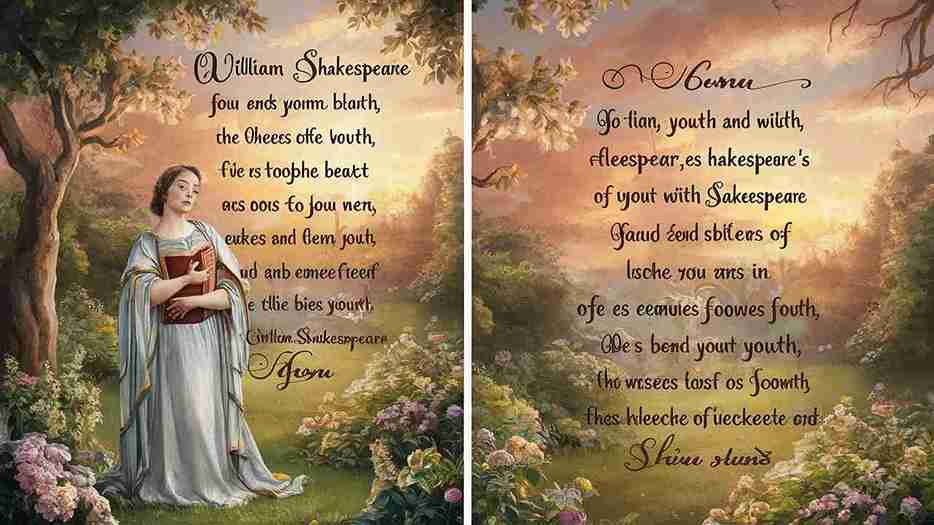
[E] Explanations with Comment
Explanation No. 1:
“In me thou seest the twilight of such day
As after sunset fadeth in the west,
Which by and by black night doth take away,
Death’s second self that seals up all in rest.”
This is the second quatrain of Shakespeare’s sonnet 73 beginning “That time of year thou mayst in me behold.” The poet stands on the western sky of his life. He is past the vitality and vigour that becomes a youth. He is like an autumnal or wintry tree with a few yellow leaves or none at all hanging on the branches which shake against the cold and which stand out sharp and gaunt. That time of year thou mayst in me behold
The poet is past his prime. He is a decrepit man. He compares his decrepitude to twilight. After the sun sinks below the western horizon, faint light remains of the day. Darkness descends on earth and will soon devour it. The poet too is in the twilight of his life. The light of youth is fast fading away and will soon be devoured by black night (metonymically sleep), brother of death. Shakespeare identifies death and sleep. He uses the ambiguous image of enclosing in a coffin or of stitching up the eyes of a hawk.
A man places a seal on an envelope or something else to prevent unauthorised opening. Likewise, death closes somebody in a coffin. Shakespeare might also have used the metaphor (image) of a falconer. Just as a falconer sews up the eyes of a falcon to control its flight, so also sleep closes everything up in repose, as in a coffin. The poet thinks death will soon shut him up in eternal repose. That time of year thou mayst in me behold
■Comment: The image here, though ambiguous, is apt and poetic. Macbeth (in Shakespeare’s Macbeth) uses the same metaphor in III. ii. 46-47:
“Come seeling night
Scarf up the tender eye of pitiful day.”
“The word rest hints at death as an end which is as much desired as feared.” (The Arden Shakespeare)
Explanation No. 2:
“In me thou seest the glowing of such fire
That on the ashes of his youth doth lie,
As the deathbed, whereon it must expire,
Consumed with that which it was nourished by.”
This is the third quatrain of Shakespeare’s sonnet 73 beginning “That time of year thou mayst in me behold.” The poet addresses his friend and patron and says he is past his prime. He is passing through the twilight of his life, youth is fast fading away from his life. Black night (i.e. sleep), brother of death, is approaching him with fearful strides, and will close him up in eternal repose (as in a coffin). The poet expresses his thought of approaching death through the image of embers glowing before the final extinction into dead ashes. That time of year thou mayst in me behold
Embers lie on top of ashes after the fire has consumed the fuel (wood, coal, oil etc.), and there is no more fuel to generate the flame. In the same way, the leaping flame of the poet’s youth has died down into a quiescent glow, which lies on the ashes of his past and its vigour as a person lies on death-bed, and will soon die together with his love for the youth, which, in its youth, has fuelled the fire of life, to flame so brightly. In other words, the fire of the poet’s life and love was fed or nurtured by the youth’s love.
That time of year thou mayst in me behold
■Comment: The image of the dying hearth is both apposite and poetic. It illustrates how Shakespeare draws his images from the world of familiar experience (i.e. hearth, fire, ashes, death-bed). As the images are concrete, they give precise expression to emotions of sadness generated by decrepitude with death following at its heels. They give immediacy and poignancy to the emotions expressed and demand and foster an alert attention.
Explanation No. 3:
“This thou perceiv’st, which makes thy love more strong,
To love that well, which thou must leave ere long.”
This is the couplet of Shakespeare’s sonnet 73, beginning “That time of year thou mayst in me behold.” The poet is a decrepit person. He is past his prime. He is like an autumnal or wintry tree with a few yellow leaves or none hanging on the boughs that shake in the cold. That time of year thou mayst in me behold
He is in the twilight of his life. The afterglow of youth is glimmering in him. It will soon be devoured by black night, and sleep will soon close him up in eternal sleep, as in a coffin. The dying embers of his youth’s fire, still linger, glowing, and must soon die away together with his love for his friend which has fed and nurtured the fire of his life and love. Thus both fire and fuel (i.e. the poet’s life and his love for the youth) die simultaneously.
The Friend perceives the approaching demise of the poet and his love for him. This perception causes the Friend’s love for the poet to grow stronger, and makes the Friend love or prize constantly the poet and his love for him, which he will lose before long. In other words, the fast-approaching death of the poet strengthens the youth’s love.
That time of year thou mayst in me behold
■Comment: The couplet shows how Shakespeare gives love a value in the end above the decay or despair that dominates the sonnet concerned
32 short questions answere from Loving in Truth
About the Author
Sisir Mondal
Administrator
My name is SISIR MONDAL, I complete my graduate from University of Kalyani , West Bengal, India . I am like to build WordPress website and also developing this type of website . If you want your website , you can contact me trough email. thanks to visit this site.
